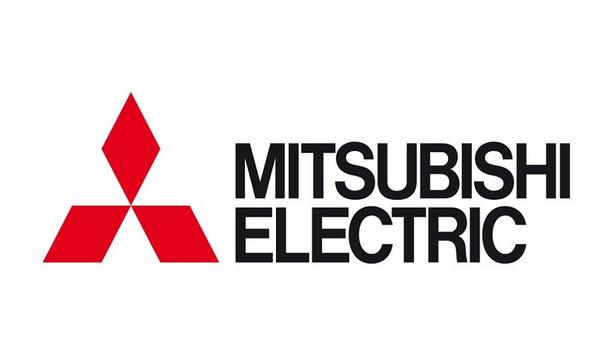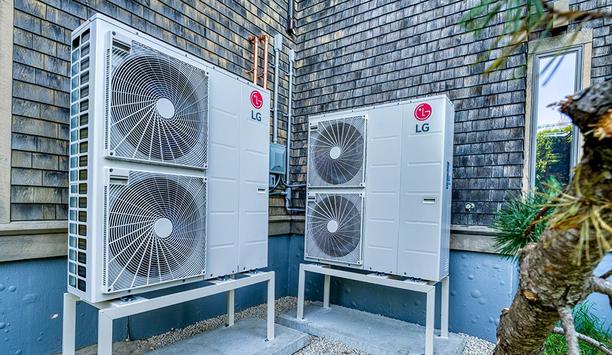The power grid is undergoing a transformation to keep pace with the rising energy demands of our modern era.
This shift is driven by major trends such as the electrification of transportation and HVAC systems, as well as the rapid expansion of AI and renewable energy.
Smart Grid
The goal is to evolve the traditional electric infrastructure into a more advanced
To enhance capacity, resilience, and adaptability, the goal is to evolve the traditional electric infrastructure into a more advanced "Smart Grid." This modernization takes inspiration from Industry 4.0, which leverages tools such as sensors, IoT, and data analytics, to revolutionize operational efficiency across all sectors of the economy.
The cornerstone of this digital ecosystem is the intelligence it brings to grid operations, offering valuable insights and actionable data. It enables real-time asset health monitoring and supports proactive, condition-based maintenance.
By identifying potential issues early, operators can implement predictive strategies—such as refilling gas or replacing O-rings—before failures occur. This condition-driven approach addresses problems based on the actual state of equipment, reducing the risk of unexpected breakdowns, lowering the need for expensive emergency repairs, and extending the lifespan of critical, high-value assets.
The Role of Advanced Gas Density Sensors
A key enabler of this transformation is the adoption of advanced gas density sensors in gas-insulated switchgear (GIS). Since the 1980s, GIS has become widely popular due to its compact design, excellent reliability, and ability to handle higher voltage levels efficiently.
High-voltage switchgear has evolved significantly—from the bulky air-insulated switchgear (AIS), which occupied the size of a football field, to GIS systems that require just 10% of that space.
This innovation is possible thanks to pressurized chambers filled with highly compressed insulating gas, which house the high-voltage components. This gas effectively prevents or extinguishes arc faults and short circuits, enabling more reliable and space-saving power systems.
Critical Gas Density
Sulfur hexafluoride is the most effective gas for insulation and arc extinguishing at high voltages
Sulfur hexafluoride is the most effective gas for insulation and arc extinguishing at high and extra-high voltages. However, SF6 has a greenhouse gas effect 23,500 times greater than CO2, making even small leaks unacceptable.
For this reason, strict regulations worldwide demand rigorous monitoring to prevent SF6 from escaping. Effectively monitoring insulating gas density is more critical than ever for ensuring the reliability and safety of gas-insulated high-voltage systems.
Maintaining proper gas density within pressure compartments is essential to prevent functionality issues, safety risks, and environmental violations caused by leaks. This is also critical as the industry explores less environmentally harmful alternatives to SF6, which still require precise monitoring to ensure sufficient insulating gas levels are maintained.
Predictive Maintenance
Utilities now face dual challenges: operating plants without interruptions and reducing plant sizes. This has led to a shift toward continuous electronic density monitoring and predictive maintenance over traditional warning and shutdown systems. As smaller compartments with reduced insulation volumes become the norm, tighter gas monitoring is essential.
Traditional Gas Density Monitoring
Pressure gauges, using Bourdon tubes and bimetallic temperature compensation, were once standard for monitoring systems. While cost-effective, they are less precise due to design limitations.
Gas density is typically inferred from pressure using manometers or sensors, but significant temperature variations in closed systems lead to inaccuracies without proper compensation. In a closed, gas-insulated system, the number of gas molecules (density) remains constant, but pressure and temperature vary based on isochores.
Outdoor installations face temperature extremes from -40°C to +60°C, requiring precise temperature compensation to avoid false readings. Without this, sunlight or frost can cause density displays to fluctuate, even when the actual gas density remains unchanged.
Extreme Condition Challenges
Outdoor installations are an increasing share of gas-insulated switchgear (GIS) setups due to the rapid growth of renewable energy projects and the rising need to support bulk power transfers across long distances.
Bimetallic temperature compensation must be tailored to the insulating gas, but large temperature fluctuations can lead to significant measurement inaccuracies. At extreme temperatures, these inaccuracies increase further, resulting in false alarms. Reliable gas density monitors must withstand harsh conditions, function across varying altitudes and pressures, and ensure continuous, accurate measurements.
Breakthrough in Accuracy
Traditional temperature-compensated pressure gauges fell short when it came to reliable gas density monitoring, often lacking the precision needed and leading to false alarms. To address this, Trafag AG, in collaboration with switchgear manufacturers, revolutionized the field in 1987 with the introduction of an innovative reference chamber system.
This advancement significantly outperformed conventional manometer-based designs, offering greater accuracy and reducing the occurrence of false alerts. Unlike conventional density gauges, Trafag’s system uses a reference gas housed in an isolated reference chamber. This reference gas mirrors the properties of the insulation gas within switchgear components.
Both gases are thermally coupled, maintaining identical temperatures, which eliminates pressure variations caused by temperature changes. By design, the monitors are fully temperature-compensated, delivering a level of accuracy that surpasses standard pressure gauges.
Why Accuracy Matters
When insulation gas pressure drops, the reference chamber system activates precise mechanical switching points via microswitches. At the first alarm level, operators are prompted to refill the insulation gas. Only a rapid and significant pressure loss triggers an automatic system shutdown, thanks to the system’s reliable secondary switching points.
This high level of accuracy has significant benefits. Density monitors designed with narrow alarm thresholds enable more compact and efficient plant designs. With greater measurement precision, insulation volumes can be reduced, allowing for smaller, optimized systems.
This minimizes the site area required for switchgear installations. In contrast, less accurate density monitoring necessitates larger volumes and broader tolerances, resulting in bulkier, less efficient designs.
Continuous Monitoring
Gas monitors have improved measurement accuracy by reducing temperature distortions
Gas monitors with reference chamber designs have significantly improved measurement accuracy by reducing temperature-related distortions. But these systems have inherent limitations.
They only provide precise readings at specific moments, triggered when pressure crosses a microswitch threshold, providing only intermittent data points. This limitation leaves gaps in system visibility, requiring engineers to rely on data interpolation or trend extrapolation to evaluate and predict system performance.
As the power distribution industry increasingly relies on real-time, high-resolution data for advanced analytics and preventative maintenance, the need for continuous monitoring has become crucial. To address this challenge, a significant breakthrough emerged in the mid-1990s with the introduction of Trafag's electronic density sensor.
Accurate Gas Measurement
This innovation utilized quartz tuning fork technology—a method commonly used in timekeeping devices—to enable continuous, drift-free gas density measurement. By measuring changes in resonant frequency as the tuning fork oscillates within the gas, this technology provides continuous, real-time monitoring.
The density sensors are mounted to the pressure compartment via a customizable process connection, ensuring equilibrium between the insulating gas in the compartment and the sensor's measurement chamber.
The system uses two quartz oscillators: one in a vacuum and the other surrounded by the insulating gas. By comparing their resonant frequencies, the sensor determines the gas density with exceptional accuracy.
Density Detection
Gases of different densities alter the predetermined resonant frequency of the quartz tuning fork surrounded by the process gas. This shift in frequency is proportional to the gas density, with a response time of less than 10 milliseconds—ideal for detecting rapid density changes. Additionally, a built-in temperature sensor refines the measurement for even greater reliability.
Condition-Based Preventive Maintenance
Digital gas density sensors with continuous monitoring capabilities enable the shift from traditional time-based preventive maintenance to a more efficient, condition-driven approach.
Time-Based Maintenance: Maintenance has traditionally been scheduled based on factors such as material aging and the environmental conditions in which equipment operates. This approach aims to prevent failures by servicing or replacing parts at set intervals.
However, it often leads to unnecessary replacements and increased costs, as components may not always require maintenance when scheduled.
Efficient Upkeep
Condition-Based Maintenance: In contrast, condition-based maintenance is based on the actual, real-time state of the equipment. By monitoring the condition of components, this strategy identifies which parts require attention, allowing operators to perform maintenance only when wear or degradation is detected.
This targeted approach not only reduces unnecessary downtime but also extends the lifespan of components by addressing issues before they escalate into major failures. It represents a more efficient and cost-effective way to manage equipment.
Predictive Insights
With the implementation of continuous monitoring, operators gain a comprehensive and accurate understanding of the gas's current state and its evolution over time. The sensors provide high resolution data that can be analyzed to spot trends, enabling predictive maintenance and more informed decision-making.
Preparing for the Future
The shift toward a smarter, more intelligent grid, coupled with condition-based maintenance, represents a gradual evolution rather than a sudden revolution. This transformation takes time, and systems are adapting at different speeds.
However, even those in the early stages of this transition can recognize the direction the industry is heading. Given that gas-insulated switchgear typically has a lifespan of 30-40 years or more, it is prudent to future-proof infrastructure.
As a result, some are turning to hybrid systems. The hybrid gas density monitor combines the advantages of a mechanical monitor with a reference gas chamber and the advanced functionalities of an electronic gas density sensor, all integrated into a compact, multi-functional device. With continuous measurement output, it is ideally suited for gas management and trend analysis systems. It also includes a local display and durable switchpoint alarm contacts for enhanced reliability.
Smart Grid Integration
Even if the current digital ecosystem is not fully equipped to utilize the continuous monitoring and real-time data provided by the electronic gas sensor, this technology is seamlessly embedded within the equipment. This ensures its availability for future use as grids evolve and become more compatible with smart technologies.















